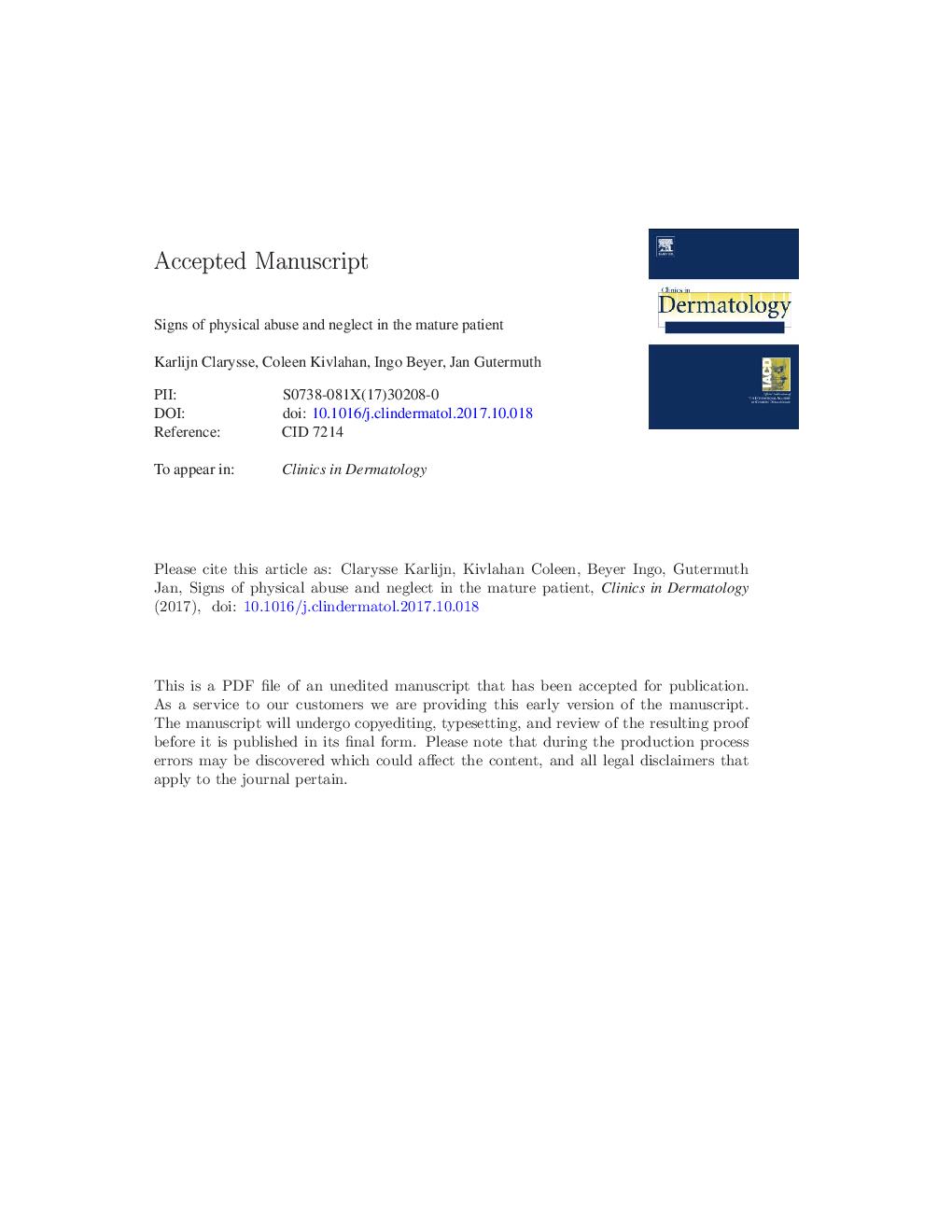| Article ID | Journal | Published Year | Pages | File Type |
|---|---|---|---|---|
| 8712348 | Clinics in Dermatology | 2018 | 19 Pages |
Abstract
Neglect and physical abuse of elderly are worrisome health problems, which are expected to grow even further, considering the aging of the population. By 2060, the number of people aged above 65 years is expected to double, whereas birth rates are low. This trend will cause a significant imbalance between different age groups and put more senior adults at risk for abuse. Risk factors, associated with abuse and neglect, are well established and can be categorized in sociodemographic-, victim-, or perpetrator-related risk factors. The effects of these risk factors depend mainly on the setting, which can be community-dwelling or institutionalized older adults. In community-based settings, 90% of perpetrators are family members. In each setting, suspicious physical injuries should be recognized and addressed promptly. This can be very challenging in elderly, among others, due to the age-related skin changes, which can mimic abuse; however, there are some cutaneous clues that should always raise suspicion of abuse, such as patterned shape or distribution, different healing stages of wounds, parallel injuries, signs of blunt trauma, and irregular patches of alopecia. General awareness is needed, and the advice of dermatologists, who are best trained to differentiate between those lesions, should be systematically sought, to reduce false-positive and false-negative interpretations.
Related Topics
Health Sciences
Medicine and Dentistry
Dermatology
Authors
Karlijn MD, Coleen MD, MSPH, Ingo MD, PhD, Jan MD, PhD,
